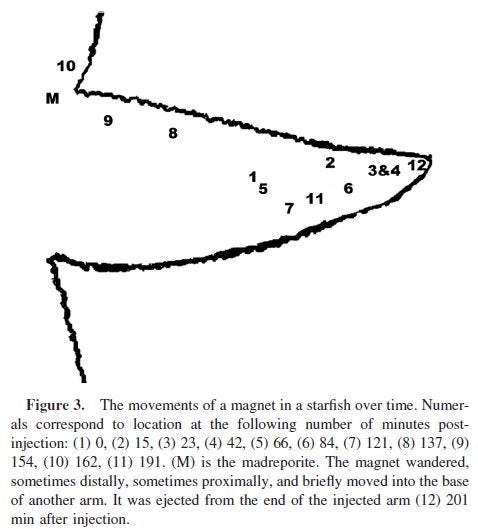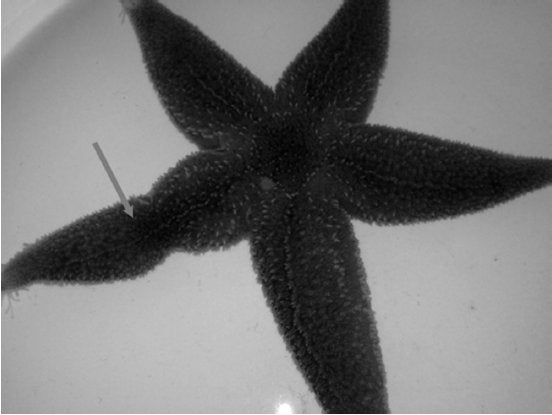This article was published in Scientific American’s former blog network and reflects the views of the author, not necessarily those of Scientific American
A funny thing happened when two Danish college students injected tracking tags into starfish. The tracking tags kept mysteriously winding up on the bottom of the tank. The students – Trine Bottos Olsen and Frederik Ekholm Gaardsted Christensen -- tell the story far better than I can …
Starfish are famous for their ability to regenerate a disconcertingly large chunk of their bodies if dismembered. Now they also seem capable of expelling disconcertingly large objects through their skin. What up, starfish? Did you guys get bitten by a radioactive sea spider at some time during the last 500 million years?
On supporting science journalism
If you're enjoying this article, consider supporting our award-winning journalism by subscribing. By purchasing a subscription you are helping to ensure the future of impactful stories about the discoveries and ideas shaping our world today.
As you saw in the video, to try to figure out exactly what was happening inside the starfish, the students injected magnets (laboratory magnetic stirring bars, in fact) so they could trace their movement. Bizarrely, rather than heading straight for the exit, the magnets went on an erratic sightseeing tour of the starfish body cavity.

In this image with somewhat awkward time intervals (see figure caption), you can see how a magnet wandered back and forth in two arms before expulsion. Four out of 20 magnets tested ended up at some point in the central disc of the starfish, and two moved into a different arm. One magnet moved between three different arms and had yet to be expelled by the last day of the experiment, Day 10.
The seemingly random walk of the magnet was supported by experiments calculating the odds of a tracking tag being expelled at any given time. These odds remained relatively constant throughout the experiment.
There were a few clues to how the starfish might be reorganizing their innards to encourage tags and magnets to move along. Sometimes, the arm containing the magnet constricted next to it, but the constrictions did not visibly move.

Visible arm constriction near a magnet. Arrow indicates location of magnet. Figure 6 from Olsen et al. 2015.
The magnets did, however, and seemed to move fastest when reacting to these squeezes. Each squeeze lasted for several minutes and they occurred in all the starfish.
The authors hypothesize that starfish detect the foreign object through some sort of immune-mediated irritation and then contract muscles in the vicinity of the irritation – although the exact location of the squeeze seems random, accounting for the many instances of retrograde progress) until the object is backed up against the tip of an arm. Once cornered, one last squeeze stretches and bursts the skin, ejecting the irritant.
Why might starfish possess this behavior? The authors don't know for certain, although they speculate the movements may be useful for evicting large parasites and bits of arthropod exoskeleton, coral, sand, or rock introduced by injuries. The authors also wonder what other animals might use the same method – starfish relatives called sea urchins, at least, do not, because tracking tags injected into them do not end up in the bottom of the tank. They also mused about “the range of objects starfish can eliminate in this way”. [eavesdropping laboratory starfish shudder]
For animals that are often popularly depicted as no more than inanimate seabed or bathroom decor, this adds to an arsenal of repair and maintenance skills at which the rest of us can only marvel and envy. Wouldn't it be useful to expel a bullet lodged in an inconvenient spot this way? On the other hand, perhaps it's not such a bad thing we don't possess this ability. It wouldn't do to have to worry about our bodies spontaneously ejecting pacemakers, subdermal contraceptives, and breast implants(!). Definitely something to think about.
Reference